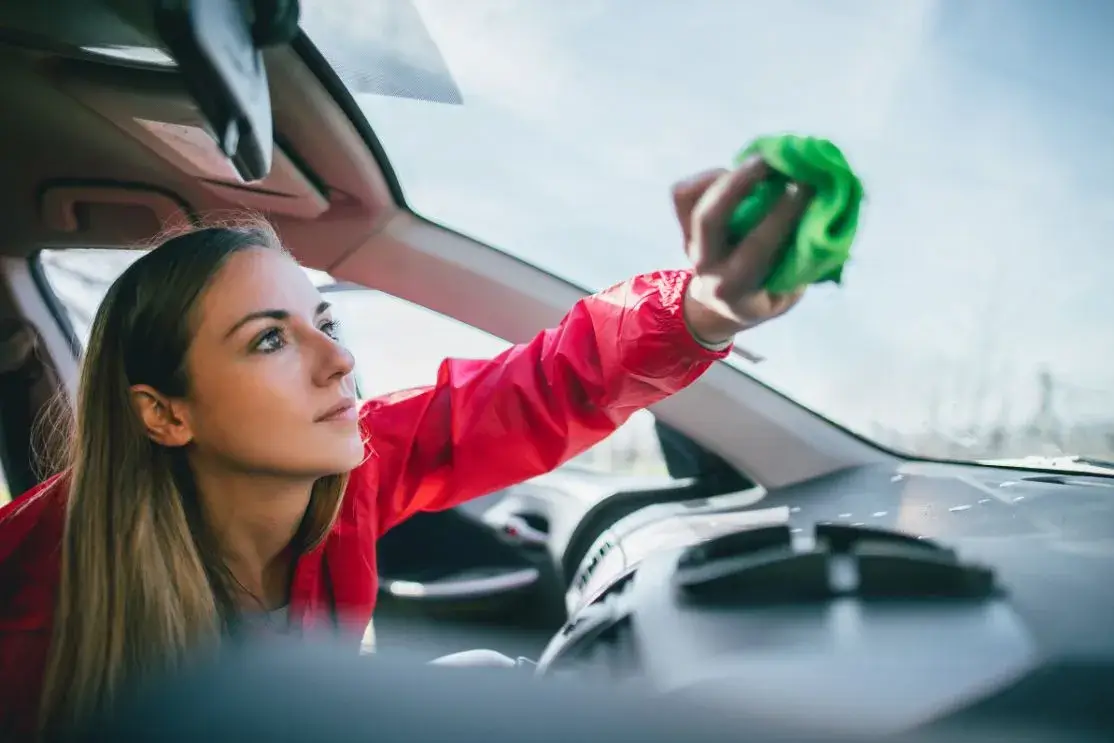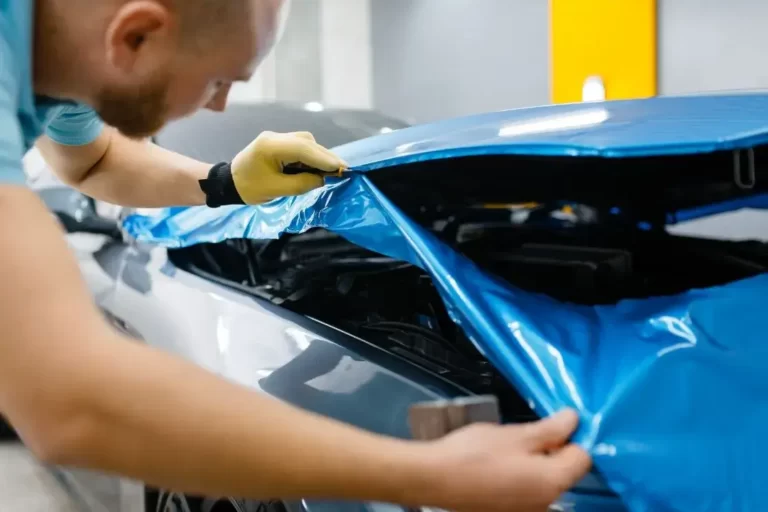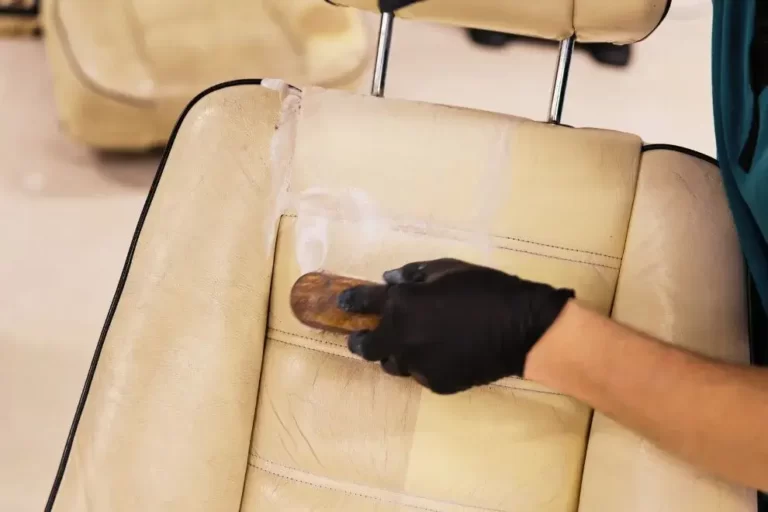How To Clean Your Old Car
Cleaning an old car can be a challenging task. According to Oneflare, Australia’s average car service cost is $150 to $550, depending on various factors such as vehicle type, location, and distance traveled. For those with older cars that have been neglected, this cost may even be higher due to repairs or replacements needed for parts of the vehicle.
However, with some patience, knowledge, and effort, it is possible to clean your old car without having to call an expensive professional detailer. This article will provide a comprehensive guide on scrubbing your old car.
The first step in adequately cleaning an old car is understanding what type of dirt has accumulated inside and outside the vehicle. Dirt build-up affects its appearance and can impact performance when left unchecked for too long.
To determine which kind of dirt you are dealing with, look at any areas where dust accumulates, such as behind door handles or near vents.
Once you have identified the type of surface dirt, you can move on to general cleaning techniques such as vacuuming and exterior washing surfaces and interior carpets, fabrics, leathers, or plastics.
Finally, specific processes must be followed depending on the material needing attention, whether applying wax to paintwork, refreshing tired upholstery fabric with conditioners and sprays, etc. It is important to consider these details if you wish to achieve a desirable result after all your hard work!
Preparing The Car For Cleaning
Before beginning the cleaning process of an old car, it is vital to prepare the vehicle properly. This involves removing any dust or debris from the car’s interior and exterior surfaces.
To do this, a damp cloth can be used with soapy water for gentle scrubbing on all areas, including, but not limited to, doors, consoles, and seats.
For more stubborn spots like tar or road film, use a clay bar in combination with detailing spray to loosen particles before wiping them away.
In addition, preparation should include vacuuming upholstery and carpets, and other fabric materials. After completing these preparation steps, it is suggested that the surface area be allowed to dry thoroughly using a clean microfiber towel.
Washing The Exterior
Cleaning your car’s exterior is the first step in restoring its former glory. First, wash your car with a high-quality car wash, soap, and water. Start at the top of the car’s body and work downwards to prevent streaks from forming on the sides.
Utilise a cleaner for cleaning cars to help remove stubborn dirt, grime, bugs, and tree sap. Make sure to use fresh rags for each part you are washing.
This prevents the spreading of contaminants around your vehicle’s surface. Pay special attention to areas like door handles, trunk lids, gas caps, and wheel wells where dirt might accumulate more easily; these should be cleaned regularly.
When finished washing, rinse off all remaining suds and let the car dry naturally before applying wax or sealant.
Waxing To Protect And Shine
After thoroughly washing and drying the car, it’s time to apply a layer of wax. Waxing provides an additional barrier against the elements, which is particularly beneficial for preventing oxidation and rust on older vehicles. It also imparts a lustrous sheen to the exterior.
Choose a clean cloth and a small quantity of high-quality car care polish to commence waxing your vehicle’s surface. Always use a microfiber cloth when applying wax. Other fabrics might harbour dirt or debris that could scratch the paint finish during buffing.
Be patient and consistently spread the polish over each panel using circular movements. Apply more pressure if required, but avoid excessive force that could harm the paintwork.
Allow the wax to rest for about 10 minutes once you’ve finished, then remove any lingering residue with another clean microfiber cloth. This ensures optimal glossiness without leaving streaks or smears.
With the correct technique, you’ll soon have a gleaming exterior that safeguards against external contaminants and looks impressive!
Cleaning The Interior
It may be a surprise, but cleaning your car’s interior is much more complicated than washing the exterior. But do not worry – with the right tools and techniques, you can quickly clean your old car’s interior!
The first step to cleaning your car interior is to tackle the seats. Start by wiping down each seat individually using circular motions; then use an attachment on a vacuum to get rid of any leftover dirt or debris that was missed by the towel. For this part of the job, you only need a microfiber towel and mild soap or upholstery cleaner.
Once you are finished vacuuming each seat, apply carpet cleaner onto them and let them sit for about 10 minutes before scrubbing them off with a damp cloth.
After taking care of the seats, it’s time to move on to vacuuming the carpeting throughout your vehicle. This will help remove dirt and dust from deep within its fibres. Something that cannot be done when wiping with a rag or mop.
Crevice tools for hard-to-reach areas like underneath seats. To ensure every corner is covered, use different attachments depending on where you’re working:
- Small brushes for tight spaces.
- Long hoses for large surfaces such as trunk floors.
Finally, finish off by spraying an odour eliminator inside your car to eliminate bad smells for good!
Attention To Small Spaces And Crannies
After cleaning the car’s interior, it’s time to focus on small spaces and crevices. Utilise a window cleaner to reach those hard-to-access nooks and crannies that might have been overlooked during the body cleaning. Addressing these spots will ensure a thorough cleaning.
Use a leather brush attachment with your hose or pressure washer for special attention to stubborn areas if available. When using soap and water, carefully examine tight corners or crevices where dirt could be concealed. A soft bristle brush may be employed, but exercise caution to avoid scratching delicate surfaces.
Once finished, dry all components completely to eliminate any lingering moisture before waxing and polishing. Doing so lets you be confident that every aspect of your old car’s cleaning process has been adequately addressed.
Cleaning Carpet and Upholstery by Vacuuming
Thoroughly vacuuming the interior of a vehicle is a crucial step in revitalising an old car. This process eliminates dust, dirt, and debris from carpets and upholstery that may have accumulated over time. Initially, use a clean microfiber cloth or paper towels to remove any loose particles from the upholstery before vacuuming. This prevents the dispersal of dirt throughout the vehicle while vacuuming.
Following this step, vacuum the carpet and upholstery using a suitable vacuum cleaner. Dirty water can harm your machine if left unattended for extended periods. Be sure to empty the canister or bag after each use.
If persistent stains on either material, apply an appropriate stain remover directly to the affected area, then gently scrub with a soft-bristled brush before wiping away using a damp cloth.
Conclude by applying a fabric protector, which not only repels future stains but also conditions the fibres of both materials, yielding longer-lasting results overall.
Dealing With Air Vents And Heating Systems
Once the interior carpets and upholstery have been vacuumed, the subsequent step involves addressing air vents and heating systems. Removing dirt or grime accumulation in these areas is crucial, as neglecting them may lead to potential health issues.
Begin using a cleaning product specifically formulated for automotive interiors, such as an all-purpose cleaner that can effectively break down stubborn stains and debris. To prevent scratches around the air vent area, utilise a soft wash mitt during cleaning.
For stubborn stains, household cleaners like baking soda, white vinegar, or rubbing alcohol can be used sparingly due to their high pH levels, which could potentially damage certain surfaces within your vehicle’s cabin.
Thoroughly rinse the surface afterward to avoid leaving residue. Once completed, dry the air vents with a clean cloth before proceeding to other interior sections.
Taking extra care when cleaning your vehicle’s air vents is essential to avoid negatively impacting its performance or exacerbating existing conditions due to inhaled dust particles circulating within the car.
With this in mind, allocate sufficient time to regularly maintain your car’s ventilation system by vacuuming dust and debris from filters and replacing them as needed.
Tips On How To Keep Your Car Clean Longer
Keeping your vehicle looking its best for an extended period is achievable with the proper measures. There are several straightforward methods for car owners to maintain their vehicles in prime condition and cleanliness.
Firstly, make it a habit to clean your car inside and out regularly. This includes vacuuming floor mats, wiping down door panels, and dusting interior surfaces. Always use high-quality products specifically designed for automotive finishes when washing the car’s exterior.
To ensure optimal protection for your car’s exterior, consider waxing or polishing every six months. If you need more time to do this, visiting a professional detailer is a worthwhile investment. They can provide a comprehensive cleaning using specialised equipment for an extra shine.
Finally, staying on top of regular maintenance tasks, such as oil changes and tire rotations, will extend your vehicle’s lifespan.
Engine Bay Cleaning
With the exterior of your car now clean, it’s essential to turn your attention to the engine bay. Patience is crucial when cleaning this area. Cleaning an older car’s engine bay might require more time as dirt and grime accumulate in hard-to-reach areas over the years.
Begin by protecting sensitive components with a plastic bag or cover before using a hose to rinse away debris from beneath the hood. Employ degreasers or all-purpose cleaners to eliminate oil spills, grease deposits, and other contaminants from metal surfaces.
Allocate additional time for drying wet spots, and exercise caution to avoid starting your car. At the same time, it’s still damp, as this could harm components within the engine compartment. Finally, examine belts and hoses for wear or cracks before driving your vehicle again.
Choosing the Appropriate Cleaning Tools
Selecting the right tools for cleaning an old car is crucial to attaining the best results. Start by using a soft cloth that can effectively remove dirt and debris from the vehicle’s interior and exterior. Employ a solution specifically designed for car cleaning to ensure thorough cleaning and safeguard the paintwork from damage caused by harsh chemicals or abrasive materials.
Investing in a brush or vacuum cleaner attachment might be worthwhile for tackling stubborn dirt and facilitating deep cleaning of upholstery and carpets. However, exercise caution when using these tools, as some fabrics are delicate and necessitate specialised care during the cleaning.
Finally, clean the windows last to maintain a streak-free appearance throughout the process. You can achieve excellent results by carefully selecting suitable cleaning tools while preserving your car’s finish.
Using A Microfiber Cloth For Automotive Care
A microfiber cloth is essential for anyone wanting to give their car royal treatment. Like a knight in shining armour, it can come to the rescue of even the grimiest vehicle. Microfiber cloths are excellent for cleaning various dirt and grime from your automobile’s exterior without leaving scratches or streaks.
To start using a microfiber cloth, dampen the cloth with clean water. Ensure it is not too wet, as excess moisture could cause more harm than good when cleaning tough stains on your car’s paint. Apply mild automotive products onto the microfiber cloth before wiping down your vehicle for extra scrubbing power. However, exercise caution as harsher cleaners may scratch if applied too vigorously.
Microfiber towels are a valuable addition to any car care kit. The advantage of using a microfiber cloth is its design to handle delicate materials like auto glass and paint jobs easily. With a single wipe, smudges and fingerprints can be removed quickly, saving time and energy in the long run!
Choosing The Appropriate Mitt Or Sponge For Washing
When cleaning an older car, selecting a suitable mitt or sponge for washing is crucial. This ensures that dirt and grime are effectively removed from all car sections, preventing scratches when wiping surfaces and avoiding damage to sensitive areas like cup holders or other interior components.
When choosing a mitt or sponge, opt for one made from materials such as microfiber cloths or natural sponges, which are gentle enough to remove dirt without scratching the vehicle’s surface.
For cleaning the exterior of an older car, consider using a stiff brush or scrubbing pad if necessary. These tools can help dislodge stubborn dirt, making removing it easier with a damp cloth or sponge. Furthermore, using products like soap and wax specifically designed for automotive detailing can ensure complete residue removal while protecting the paint finish from further damage caused by environmental pollutants.
Regular maintenance is vital to keep your car looking pristine, in addition to selecting the appropriate cleaning tools. Be sure to inspect your car frequently for signs of wear and tear, addressing them before they escalate into more severe issues later on.
Using Natural Products For Car Cleaning
Cleaning your vehicle thoroughly is vital to make sure it looks its best. Now that you have selected the appropriate mitt or sponge for washing, you can use natural products to clean your car. Start at the top and work your way down, ensuring you get all the spots.
Create a solution of water and baking soda. This will serve as an all-purpose cleaner that won’t damage the paint on your car. You can even use a mixture of vinegar and water as another cleaning solution.
Be careful not to scratch or dent your car’s interior when cleaning it! Make sure your material is smooth on leather seats or plastic parts. Use soft cloths and sponges with gentle cleansers specifically designed for cars. Such as Armor All Ultra Shine Wash & Wax contains wax beads that help protect against dirt, dust, and other debris from sticking to your vehicle’s surface.
Also, apply glass cleaner onto interior windows and mirrors to remove smudges caused by fingerprints or nose prints without leaving streaks behind.
For those hard-to-reach areas, consider using cotton swabs dipped into diluted white vinegar or rubbing alcohol; these solutions help break down stubborn grime in tiny crevices around door handles, side view mirrors, and other tight spaces within the cabin area of your car.
Caring for your car’s exterior requires special attention because harsh chemicals may ruin its finish if not applied correctly. Be cautious when selecting certain products that could harm its shine over time.
Professional Detailing Services
Cleaning an old car can be challenging for some, and the mere thought often causes many to avoid it. However, with professional detailing services, getting your vehicle looking brand new is a breeze!
Professional car cleaners possess expertise in deep-cleaning cars and know precisely how to restore that once-shiny paint job. Start by searching online for a reputable service provider near you. Ensure they have positive reviews and high ratings before booking anything.
After selecting a professional cleaner, discuss the cleaning packages they offer. Most include polishing, waxing, treating leather surfaces, and more; if you need something specific, don’t hesitate to inquire or request additional services at an extra cost.
Investing a bit more in interior and exterior packages may be worthwhile, as both parts of the car will benefit from this comprehensive care.
Cleaning your car’s interior is equally crucial when giving it a complete makeover, so pay close attention to this area while considering which package best suits your needs. If you need more time to engage in such detailed work, find out if their team offers mobile detailing services too.
Some providers can visit your home, making auto care even more convenient!
Maintaining Your Vehicle’S Value Through Regular Care
Regular care is essential to help preserve the value of an old car. First, it’s crucial to clean your vehicle, both inside and out. The exterior should be washed using a gentle detergent to eliminate dirt and debris that can cause damage over time.
Once you have finished washing the exterior, dry the car with a clean microfiber cloth or chamois leather to avoid water spots forming on the paintwork.
Your car’s interior requires equal attention during cleaning; vacuum upholstery, carpets, and floor mats to prevent excessive dirt accumulation. When vacuuming, utilise soft brushes and attachments, if available, as this will help prevent scratches on any surfaces inside your car.
Look at hard-to-reach areas such as cup holders and between seat cushions. These spots often go unnoticed but require regular care too!
Lastly, ensure you pay special attention to windows, mirrors, and chrome trims, which all contribute to keeping your car looking new for an extended period. Regularly polishing these areas will help prevent scratches and rusting due to environmental factors such as dust or moisture exposure.
Taking some straightforward steps every few weeks or months ensures that your vehicle’s value remains high for years.
Conclusion
In conclusion, proper and regular car care is vital in keeping your vehicle looking its best. With some effort, eco-friendly products, and professional detailing services when necessary, anyone can keep their truck sparkling clean from the inside out. Regular maintenance preserves its aesthetic appeal and helps maintain its value over time. Following the steps outlined above, you can ensure your old car appears as good as new for many years.
Frequently Asked Questions
Q: How often should you clean your car?
A: It’s best to clean your car at least once a month, but if you live in a dusty area or park it under trees, you might need to clean it more often.
Q: What are some tips for cleaning the exterior of my car?
A: Washing your car when it’s cool and in the shade is best. Start by rinsing the vehicle with water, then use a solution and clean wash mitt to scrub the body of your car. Remember to clean the nooks and crannies, and then rinse the car with water again. Finally, dry the vehicle with a clean towel.
Q: What’s the best cleaning solution to use for my car?
A: Many cleaners are available, but using a cleaner specifically formulated for cleaning cars is best. Check the label to ensure it’s safe for your car’s paint and won’t damage any trim or plastic parts.
Q: How do I clean my car’s interior?
A: Start by removing trash, then use a vacuum to remove dust and debris from the seats and center console. Use a cleaner to clean the dashboard, door panels, and seats. Remember to clean the windows and any tinted windows with a window cleaner.
Q: What’s the best way to clean car seats?
A: Use the upholstery attachment on your vacuum to remove any loose dirt or debris, then use a cleaner specifically formulated for your type of seat. Follow the instructions on the cleaner and use a soft-bristled brush to scrub any stains. Use a clean towel to blot the seats dry.
Q: Should I take my car to a professional detailer?
A: If you need more time or inclination to clean your car, taking it to a professional detailer is a good option. They have the tools and equipment required to clean your vehicle thoroughly and often have access to specialised cleaners.
Q: How can I remove stains from my car’s upholstery?
A: Use a cleaner specifically formulated for stain removal and follow the instructions on the label. If the stain is stubborn, it’s best to take your car to a professional detailer.
Q: Is it essential to dry my car after washing it?
A: Yes, it’s essential to dry your car after washing it to prevent water spots from forming. Use a clean towel to dry the vehicle, starting at the top and working your way down.
Q: Can I use the same cleaner I use on my car’s exterior on its interior?
A: It’s best to use a cleaner specifically formulated for your car’s interior, as the upholstery and plastic parts differ from the exterior’s metal and painted parts.
Q: What are car cleaning tips for getting into the nooks and crannies?
A: Use a small brush or toothbrush to scrub hard-to-reach areas and corners. You can also use a cotton swab or toothpick to get into small crevices.







